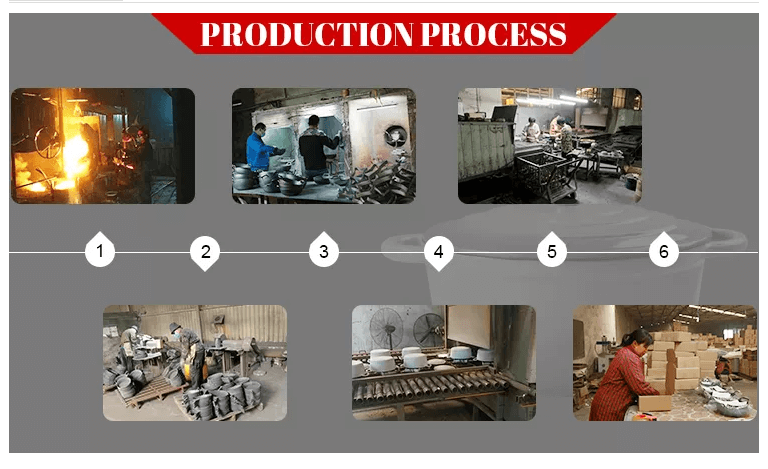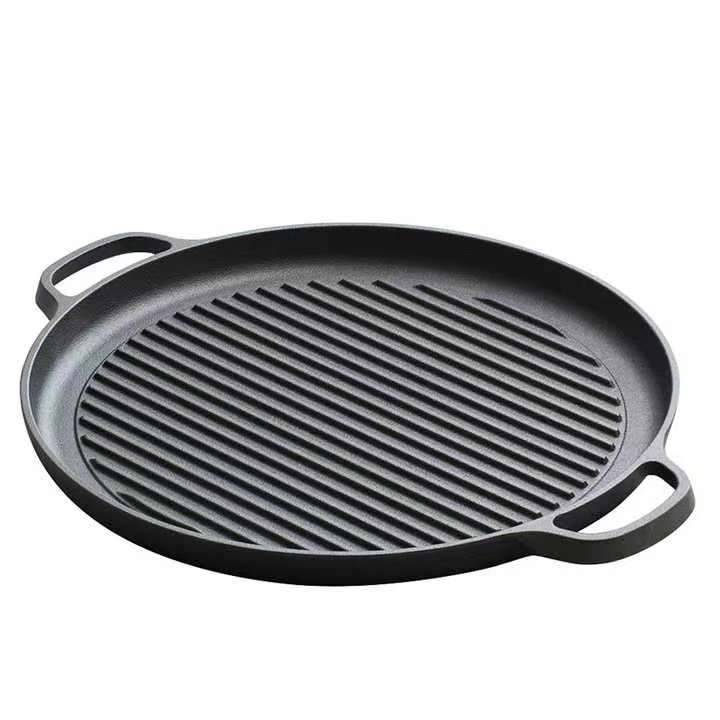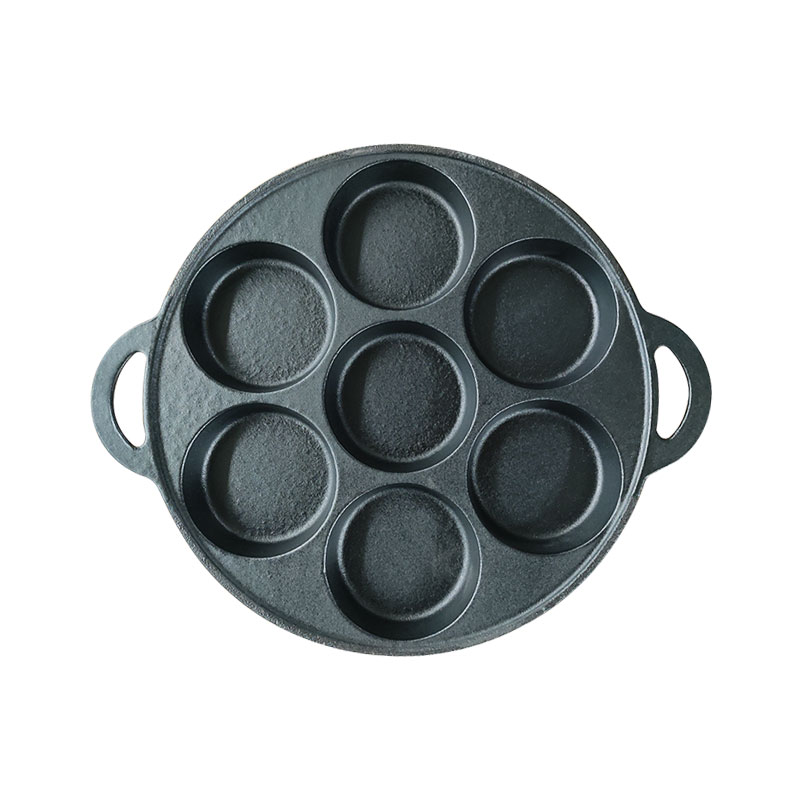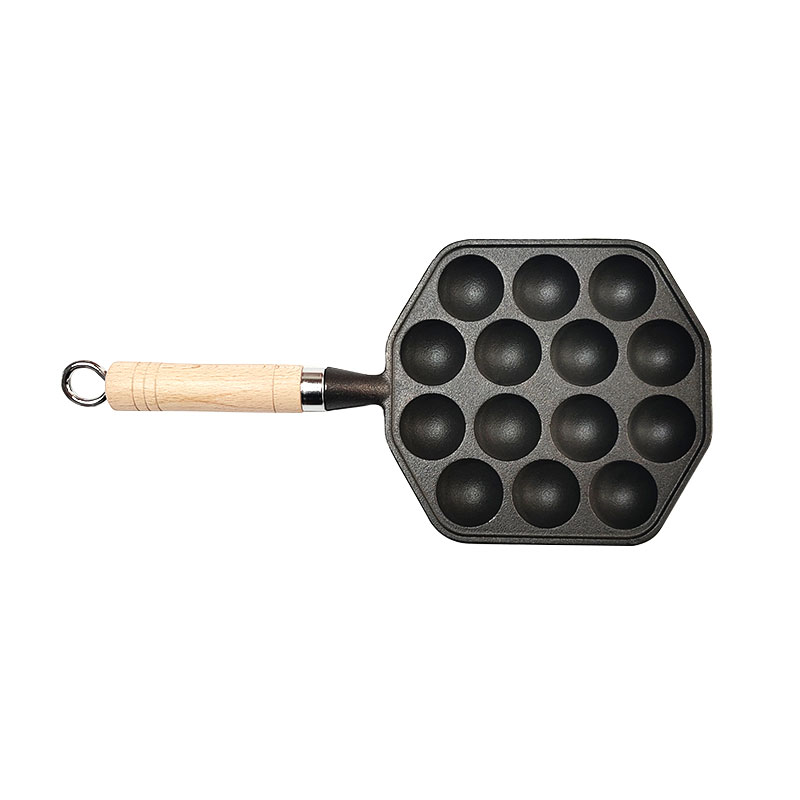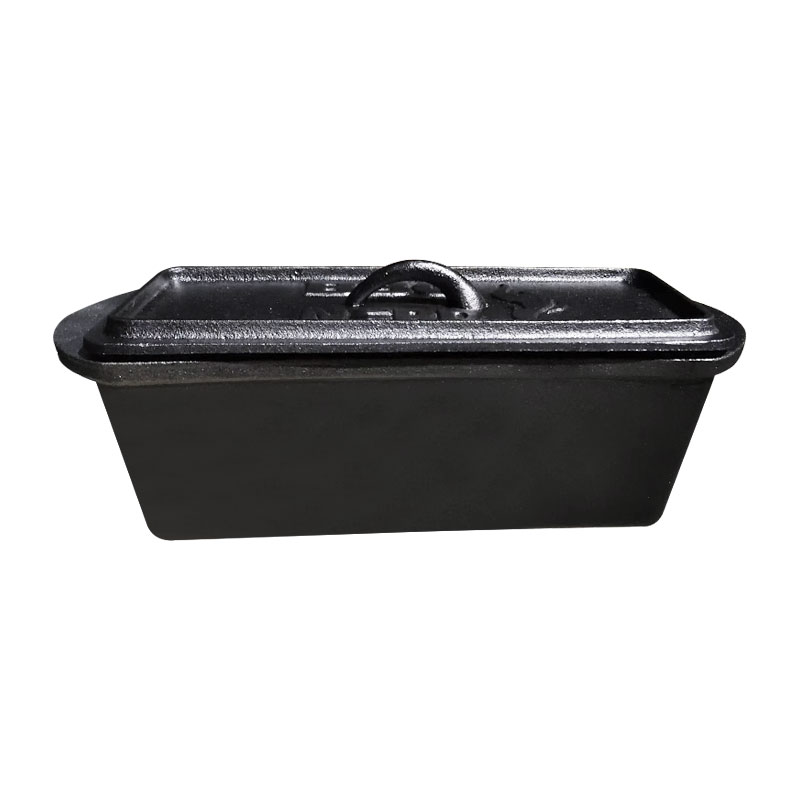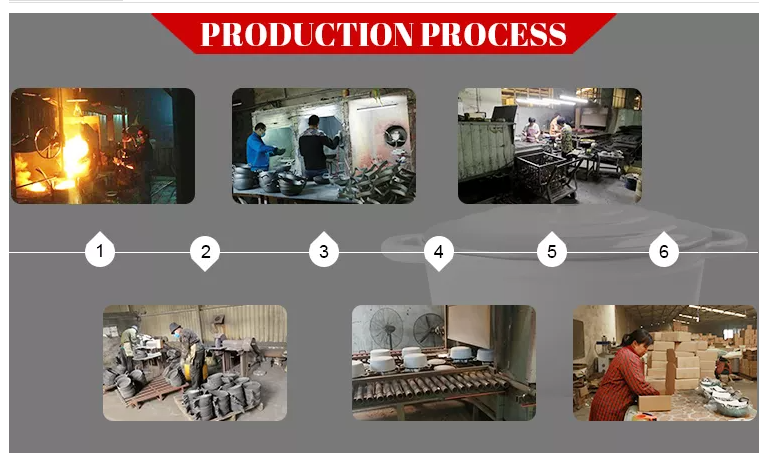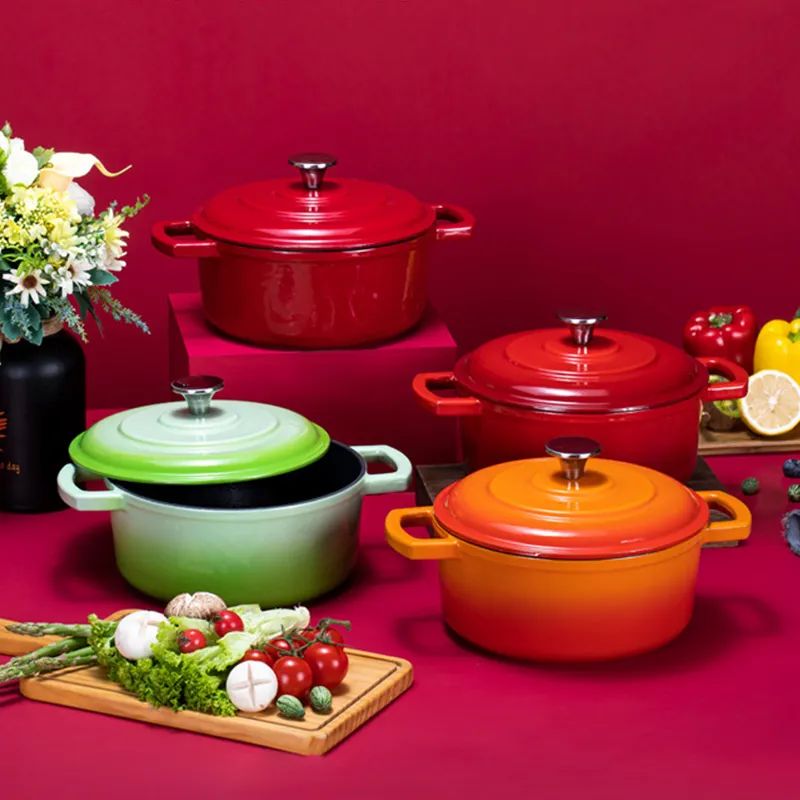Cast iron pot is made of iron and carbon alloy with carbon content of more than 2%. It is made by melting gray iron and casting the model. Cast iron pot has the advantages of uniform heating, less oil smoke, less energy consumption, no coating is healthier, can do physical non-stick, do the dish color and taste better.cast iron pots have the advantage of being very durable. If they are used normally in home cooking, they can be used for more than ten or decades. They can be used as family heirlooms.
When it comes to the pot, everyone is familiar with the pot, whether you can cook or not, but when it comes to the type of pot and production process, you may not be familiar with it. Today,I will give you a brief introduction which is about the production process of cast iron pots.
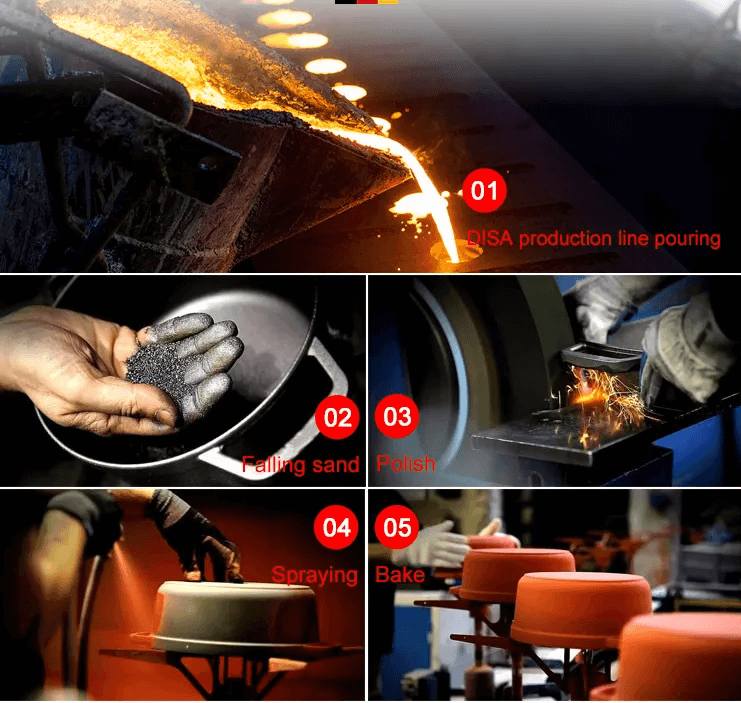
The production process of cast iron pot includes the main steps of ساخت قالب شنی, ذوب آهن با آب، ریختن، خنک کردن قالب، پرداخت ماسهای و پاشش.
ساخت قالبهای شنیاز آنجایی که ریختهگری انجام میشود، به قالب نیاز دارید. قالب به قالب فولادی و قالب ماسهای تقسیم میشود. قالب فولادی طبق نقشههای طراحی یا نمونهها از فولاد ساخته میشود. این قالب مادر است. تولید قالب ماسهای میتواند کاملاً دستی یا تولید خودکار با تجهیزات (به نام خط ماسه دی) باشد. پیش از این، تولید دستی بیشتر بود، اما اکنون به تدریج شروع به استفاده از تولید تجهیزات میکنند. اولاً، راندمان بسیار بهبود یافته، کیفیت پایدارتر شده و هزینه نیروی کار بیشتر و بیشتر میشود. یک کارگر ماهر فقط میتواند یک یا دویست قالب ماسهای در روز بسازد، در حالی که تجهیزات میتوانند هزاران قالب در روز بسازند، تفاوت راندمان بسیار آشکار است.
https://www.debiencookware.com/
Di sand line is designed by Di sand Compoty in Denmark and authorized for domestic production. A complete set of equipment is worth tens of thousands of yuan. All the compoties using this automatic production equipment are slightly larger. But Di sand line is not universal, some complicated pot type or deep pot, Di sand line can not be achieved, or need manual, these two points are also the reason why manual is not completely eliminated. Manual production is manually filled with sand in the steel mold, by pressing, so that the sand is tightly combined to form the shape of the pot. This process tests the skills of the workers: whether the humidity of the sand is appropriate or not, and whether the pressure is tight or not, affect the shape and quality of the pot.
آهن مذاب آب: Cast iron pots generally use gray cast iron, in the shape of a long bread, also known as bread iron, according to the content of carbon and silicon, there are different models and performance. The iron is heated to above 1250℃ in a heating furnace to melt into molten iron. Iron melting is a process of high energy consumption. In the past, it was through burning coal. In recent years, due to the serious environmental inspection, large factories have basically switched to electric heating. Molten iron is melted at the same time as or slightly earlier than the sand mold.
ریختهگری چدن مذاب: the molten iron is transferred to the sand mold by equipment or workers to pour into the sand mold. The casting of molten iron is completed by machines in large foreign and domestic compoties, and by workers in small compoties. Workers use a ladle-like thing, first pour the big bucket of molten iron into the small ladle, and then from the ladle into a sand mold one by one.
قالبگیری خنککننده: آهن مذاب ریخته گری شده و اجازه داده می شود به مدت 20 دقیقه به طور طبیعی خنک شود تا شکل بگیرد. این فرآیند ادامه می یابد تا آهن مذاب ذوب شود و منتظر قالب ماسه ای جدید باشید.
حذفدر قالب شن و ماسه و سنگ زنی: wait for the hot metal to cool and form, enter the sanding equipment through the conveyor belt sand mold, remove the sand and excess scraps through vibration and manual processing, and a wool return pot is basically formed. Blank pot needs to go through rough grinding, fine grinding, manual grinding and other steps, in order to completely remove the sand on its surface and polish relatively smooth and smooth, and remove the rough edge of the edge and the place that is not easy to polish by manual grinding. Manual grinding has high technical requirements for workers, and this type of work is also the highest wage in the whole process.
اسپری کردن و پختن: The polished pot enters the spraying and baking process. Workers spray a layer of vegetable oil (edible vegetable oil) on the surface of the pot, and then enter the oven through the conveyor belt to bake for a few minutes, and a pot is formed. The surface of the cast iron pot is sprayed with vegetable oil to bake in order to seep the grease into the iron pores, forming a black rust-proof, non-stick oil film on the surface. The surface of this layer of oil film is not coating, in the process of use also need to maintain, properly used cast iron pot can do not stick. In addition, the enamel pot is the same as the cast iron pot before the spraying process, except that instead of vegetable oil, the enamel glaze is sprayed in the spraying process. The enamel glaze needs to be sprayed two or three times, each time it needs to be roasted at a high temperature of 800 degrees, and finally the colorful enamel pot is formed. Then it’s time to check it out and package it out, and a pot is made.
This article is just a simple description, the actual production is far more complex than described in this article. The whole production process of the cast iron pot looks very simple, and you will know the difficulties when you really start the production process.










